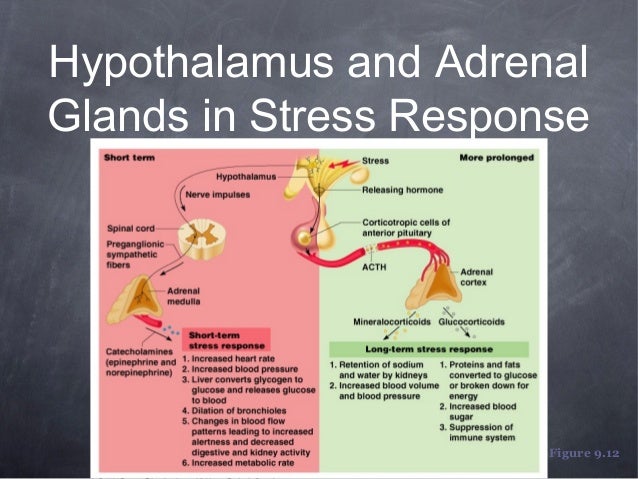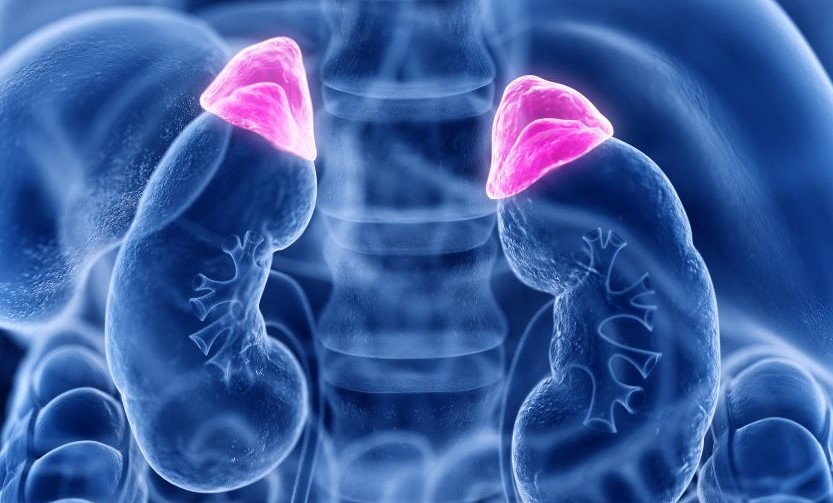

The body responds in different ways to short-term stress and long-term stress following a pattern known as the general adaptation syndrome (GAS). Psychological stresses include the perception of a physical threat, a fight with a loved one, or just a bad day at school. Physical stresses may include injury, exposure to severe temperatures or malnutrition. Stress can be either physical, psychological or both. One of the major functions of the adrenal gland is to respond to stress. Stimulation causes the medulla to secrete the amine hormones epinephrine and norepinephrine. This neuroendocrine pathway, controlled by the hypothalamus, involves stimulation of the medulla by impulses from preganglionic sympathetic neurons originating in the thoracic spinal cord. It is really an extension of the autonomic nervous system. The adrenal medulla is neuroendocrine tissue composed of postganglionic sympathetic neurons. This pathway will be discussed in more detail below. ACTH then stimulates the adrenal cortex to produce the hormone from the cortex (corticosteroids). The HPA axis involves the hypothalamus stimulating the release of adrenocorticotropic hormone (ACTH) from the pituitary.

The adrenal cortex, as a component of the hypothalamic-pituitary-adrenal (HPA) axis, secretes steroid hormones important for the regulation of the long-term stress response, blood pressure and blood volume, nutrient uptake and storage, fluid and electrolyte balance, and inflammation. Each region secretes its own set of hormones. The cortex itself is divided into three zones: the zona glomerulosa, the zona fasciculata, and the zona reticularis.

The adrenal gland consists of an outer cortex of glandular tissue and an inner medulla of nervous tissue. View the University of Michigan WebScope at to explore the tissue sample in greater detail. (Micrograph provided by the Regents of University of Michigan Medical School © 2012) The cortex can be subdivided into additional zones, all of which produce different types of hormones. Figure 17.6.1 – Adrenal Glands: Both adrenal glands sit atop the kidneys and are composed of an outer cortex and an inner medulla, all surrounded by a connective tissue capsule. Adrenal hormones are released into the circulation via the left and right suprarenal veins. Blood first flows through the adrenal cortex and then drains into the adrenal medulla. They are supplied by several arteries branching off the aorta, including the suprarenal and renal arteries. The adrenal glands have a rich blood supply and have one of the highest rates of blood flow in the body. The adrenal glands are glandular and neuroendocrine tissue adhering to the top of the kidneys by a fibrous capsule ( Figure 17.6.1). Identify the hormones produced by the adrenal cortex and adrenal medulla, and summarize their target cells and effects.Describe the location and structure of the adrenal glands.By the end of this section, you will be able to:


 0 kommentar(er)
0 kommentar(er)
